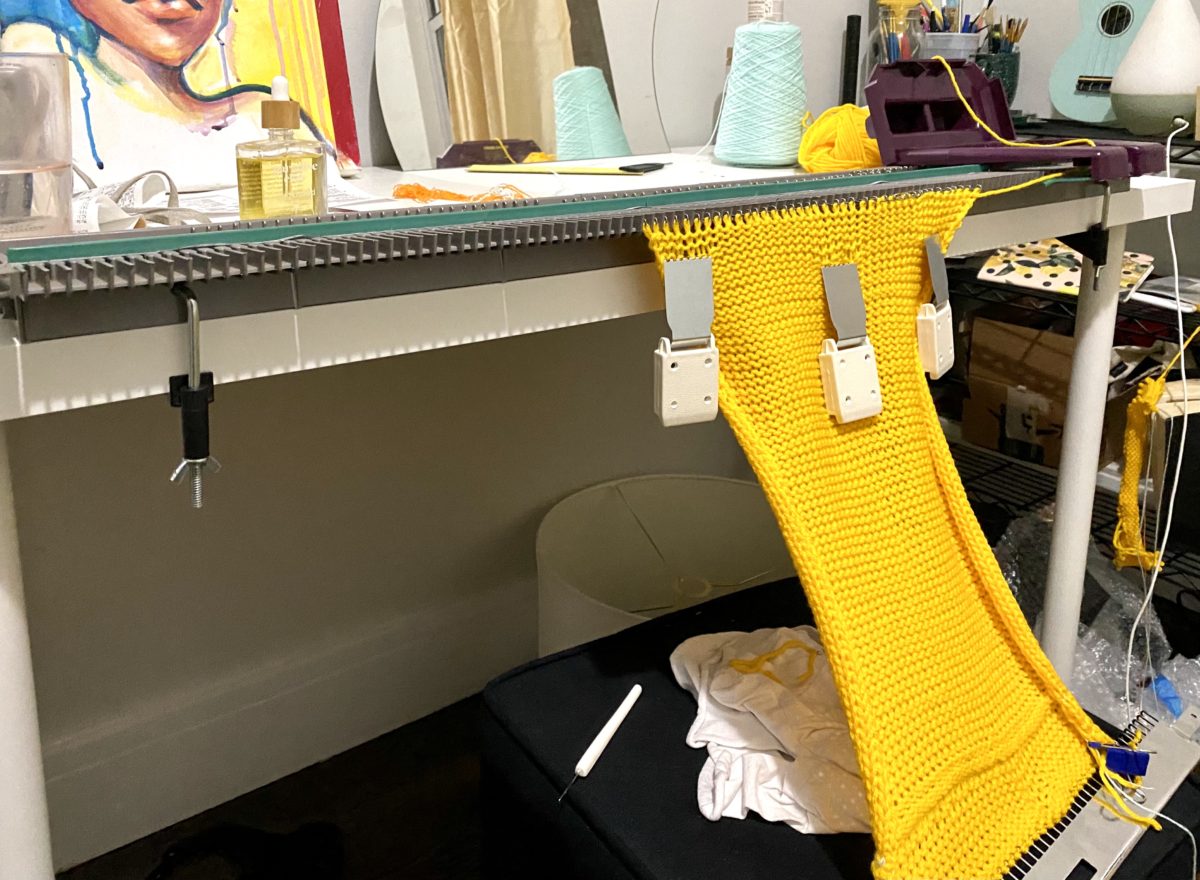This August, in the midst of the global pandemic, third-year BA/BFA fashion design and liberal arts student Yetunde Sapp, and her roommate, Rashad Heagle, decided to transform their home in Brooklyn into an artist residency and work space called ‘SLAC House’.
“This is really rare to me, to be in a house in New York City. My first apartment was like a closet. So this was an upgrade, for sure,” said Sapp.
Sapp and Heagle were living in a spacious six-bedroom, three-story home in Bushwick, Brooklyn, with a large kitchen, a backyard, and ample space to stretch out and move. They watched their other roommates — who were all in their 30’s and living separate lives — move out of the home throughout the summer. They left behind four empty rooms that were difficult to fill as the New York City real estate market faced an economic crisis and recession due to the COVID-19 pandemic.
Their landlord planned to sell the home, but Sapp saw potential in the space and wanted to help fill the other rooms with friends, young artists, and art students.
“It’s cool to have other people doing what you’re doing and understanding what you’re doing, and feel supported in that way. I really like that,” said Sapp. “I feel like New York can feel really lonely so it just feels supportive and you can have people around you.”

Sapp spearheaded the creation of SLAC house and wanted to create a home with not just art supplies and studio space, but a supportive environment where other young, BIPOC artists and creatives could live together and practice their craft.
The idea of SLAC House was inspired by the content creator homes of popular Tik Tok stars. After seeing how these homes could benefit the creators, Sapp knew she wanted to create a space that functioned in a similar way, while also supporting the needs of artists in residence.
The idea of supporting living artists is the primary mission of SLAC. Instead of idolizing and pouring support and investment into artists who are dead, it’is more valuable to support artists who are alive and working towards their dreams, explained Sapp.
“There’s living legends all around us. It’s just a matter of who they have to support them,” said Sapp.

Sapp had already founded an organization at The New School called SLAC (Support a Living Artist Collective) that aimed to uplift and connect artists at The New School and other artists in the city with resources and opportunities. SLAC also focuses on utilizing the internet and social networking to the advantage of artists.
“Instagram, as we’ve seen in this time, can be used to help people find resources that they need. I think for artists it is really hard to navigate, in general, how to find opportunities and try to establish yourself, especially a freelance artist,” said Sapp.
The other residents of the home, Yasmine Barboza, Yailenne Escobar and Khalid Mousa, are all young artists and creatives attending The New School and New York University. Together they make up the ‘SLAC Houz,’ @slachouz on Instagram and Tik Tok, which is the residential extension of the Support a Living Artist Collective as a whole. Within the home, the artists work on their own projects, collaborate, make online content, and live collectively — sharing art supplies and learning from each other.
“We’re all artists, we’re all people of color. So it’s like, we almost just naturally connect, naturally click in a way that makes this house a nice living arrangement,” said Heagle, 20, who is a photographer heavily influenced by music and dance. “Just seeing how it is now a cohesive space where you can be comfortable or you can bounce ideas off of each other and do things together there. It’s refreshing.”

Yasmine Barboza, 20, a junior at NYU living in SLAC House said that some of the best parts about living in the house have been being able to cross-reference her art with her roommates and sharing ideas.
“I feel like [the house] allows you to dream a little bit. I’m more ambitious because I think other people, when they hear your idea for something, they might push you a little more than you might push yourself,” said Barboza, who spends her time upcycling and reworking clothes, painting and making graphic designs. She also runs a small business, Fooghou, selling the clothes that she reworks.
Currently SLAC is selling self-designed t-shirts, producing an artist interview series for their YouTube channel and an ongoing documentation project on the everyday life of a living artist. SLAC is also trying to secure funds for art supplies and machinery, and locate resources like grants, for the home so residents can support their personal projects.
In the future, they hope to use the home for events and to bring other artists to collaborate — when it is safe to do so.
So far, they have been successful in securing a tufting gun and rug making kit, a knitting machine that magically appeared on the sidewalk outside of their house, and a mini-grant from Eugene Lang College’s Office of Civic Engagement and Social Justice.

“There’s a lot of people who are creating right around you, and supporting them now would help them not be starving artists. The support systems in place play a role in the success of that artist,” said Sapp. “So to be able to do that, I think is a really cool and important thing to do. Artists need a lot of support to leverage themselves into their goals and aspirations.”







